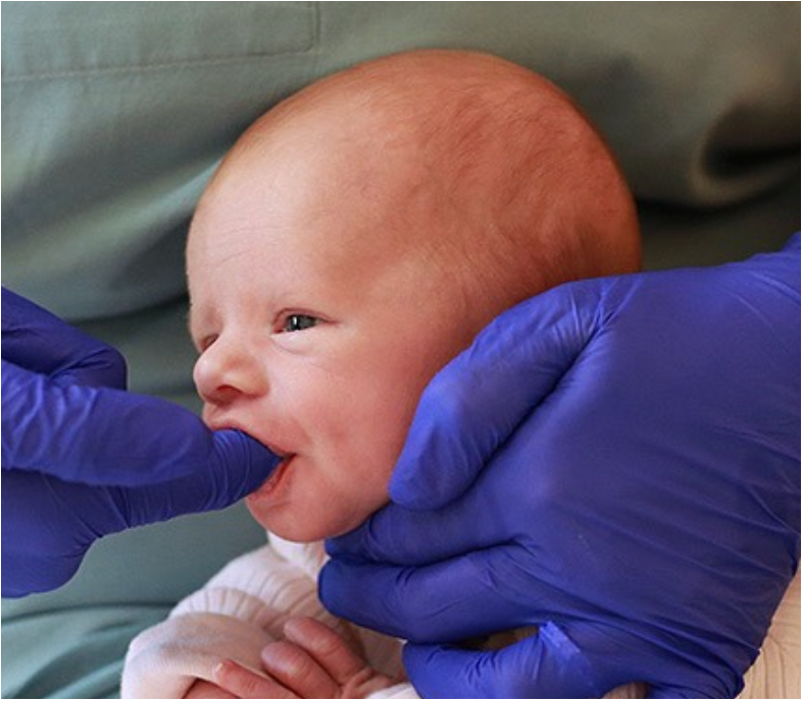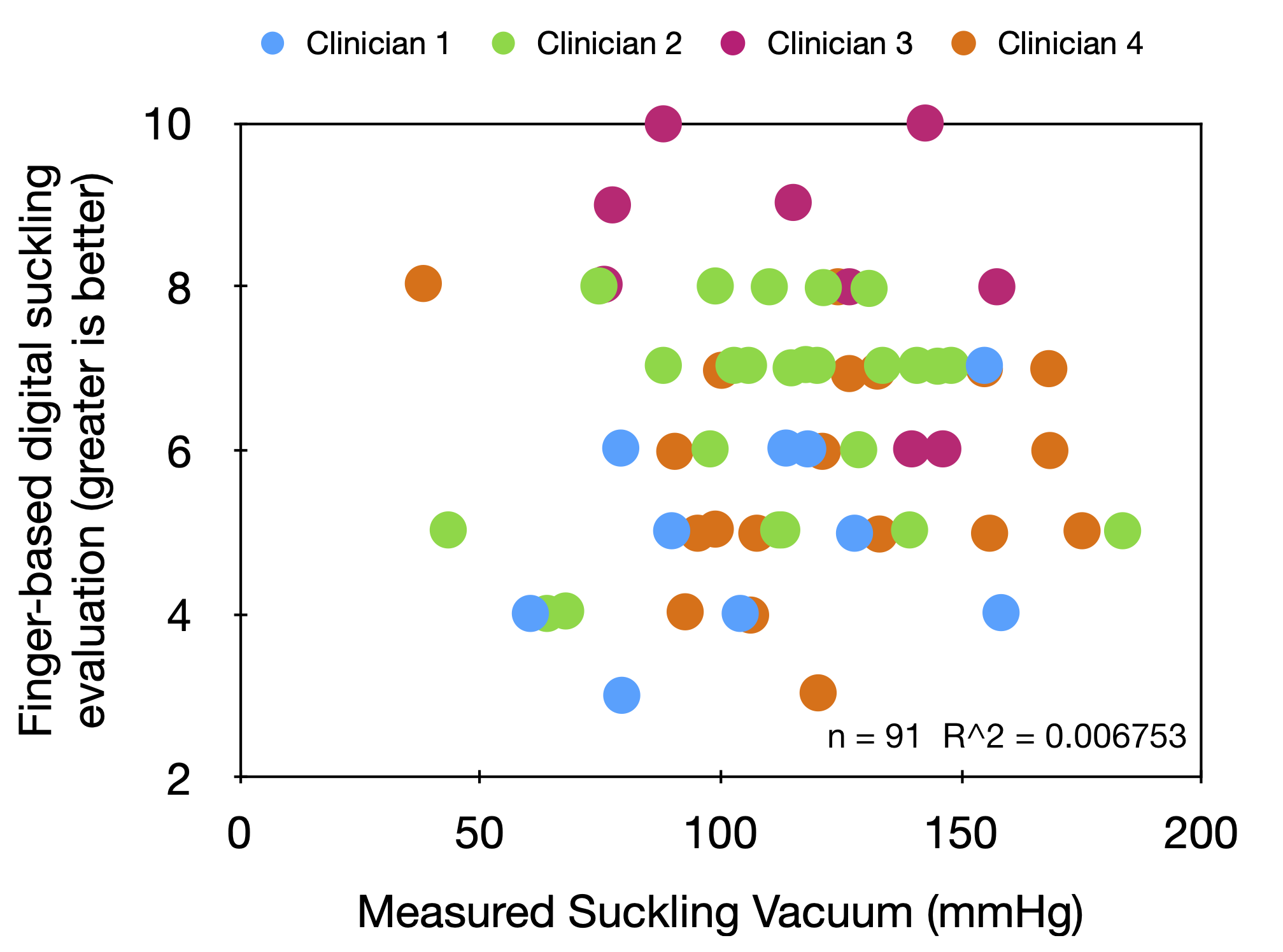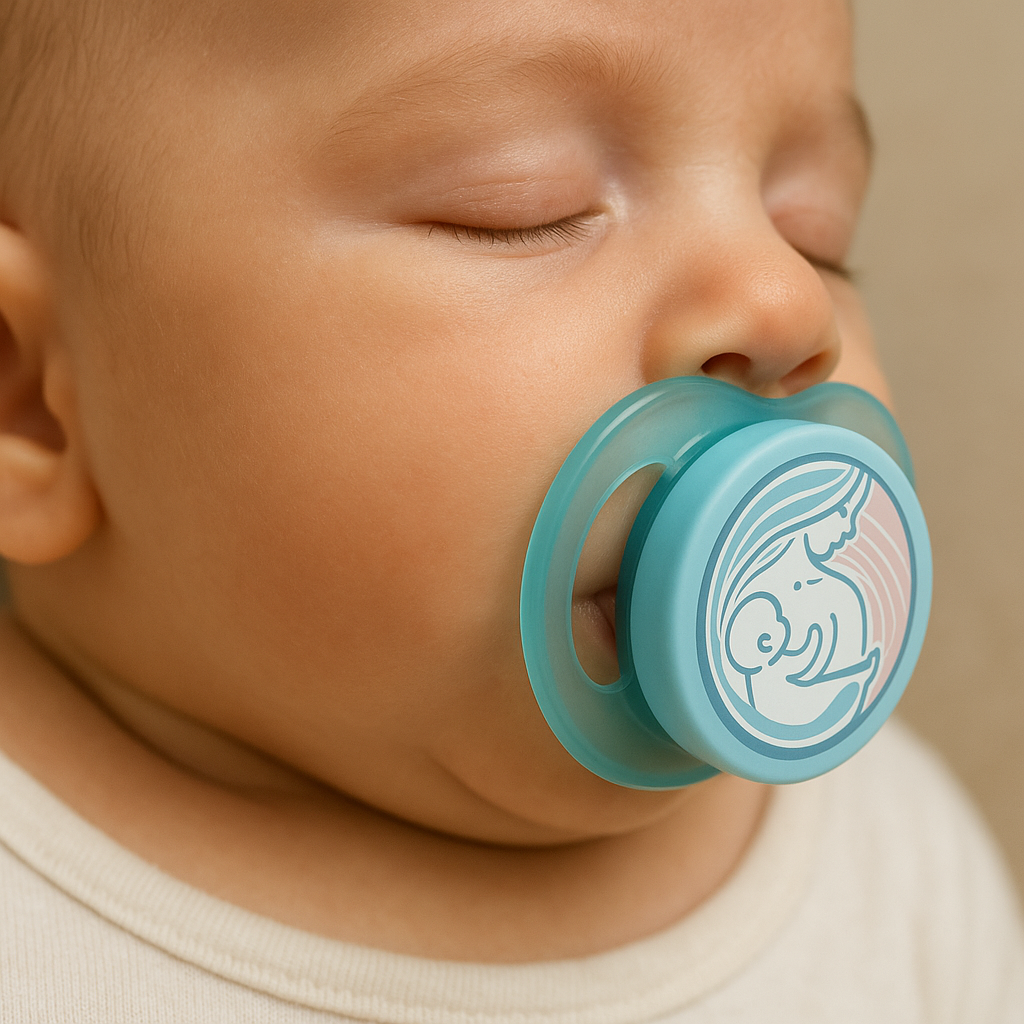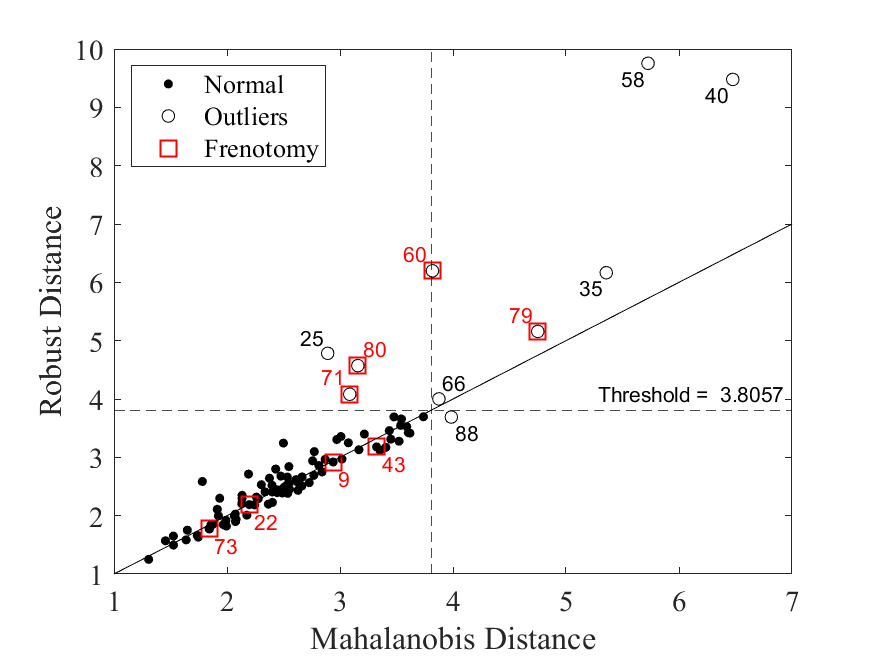A new approach to infant FEEDING diagnostics
Providing quantitative measurement and insights to solve breastfeeding problems†
Contact
Latching issues are the #1 reason mothers stop breastfeeding
Two years of breastfeeding is ideal for health, yet 75% of mothers in the U.S. stop breastfeeding before their child reaches six months of age.
Diagnosis of breastfeeding issues relies on the clinician placing their finger in the infant’s mouth to evaluate suckling capability. Our research (plotted below) demonstrates this practice does not correlate to objectively measured infant suckling ability.

Replacing finger assessment with quantified suckling evaluation
Real-time and unbiased
A quantitative measurement of suckling behavior measured in only sixty seconds, with immediate and comprehensive feedback
Easy clinical workflow
Straightforward and easily used software, incorporating standard clinical evaluation
Wireless, tablet-based
Wireless and secure electronics (HIPAA compliant)

100% Reimbursable medical device
Durable medical device with consumable pacifiers, priced to fully reimburse
Evaluate suckling versus all babies
No longer diagnose in a vacuum. Our technology provides an evaluation in the context of past patient data to aid the clinical diagnosis.

Patented technology backed by clinical data
Our peer-reviewed, published,* and patented** ongoing testing incorporates our technology alongside standard clinical breastfeeding evaluations, demonstrating an ability to identify issues in tongue-tied infants (ankyloglossia) and missed diagnoses with finger-based evaluations.
At right, our system identified infants that exhibited unusual suckling behavior.* Several of these were missed in traditional clinical evaluation (25, 35, 40, 48, 66, 88). Four infants (60, 71, 79, 80) were simultaneously identified by our technology for further investigation and by clinical evaluation as needing a frenotomy. After the frenotomy, these four infants exhibited normal feeding behavior according to our measurements.
Several other (9, 22, 43, and 73) infants were identified* as needing a frenotomy according to traditional clinical evaluation but were deemed normal with our technology. These four infants were given a frenotomy and their feeding behavior did not change.
*Truong, et al. IEEE Journal of Translational Engineering in Health and Medicine, 23(11):107-115, 2022 and 12:435-447, 2024.
**WO2024077215 Technology for Inexpensive and Quantified Evaluation of Suckling Behavior, filed 10 October 2022; US and EU patents pending.
Our team
Erin Walsh
Co-Founder, CEO, MA, CCC-SLP, IBCLC, BCS-S
Speech-language pathologist, infant feeding specialist, lactation consultant, and board certified swallowing clinician

Andre Gamelin
COO, BSEE
Medical technology industry leader, developer of FDA cleared devices, operations team builder, quality and regulatory navigator


James Friend
Co-Founder, CTO, PhD, FRSC, FIEEE
Professor of Engineering @ UC San Diego and Director of Medically Advanced Devices Lab, inventor and scientific advisor for 4 past startups with 32 issued patents

Jo Polich
Advisor, Cearna founder and CEO, NuFund investor
†CAUTION: Investigational device. Limited by federal law to investigational use.
